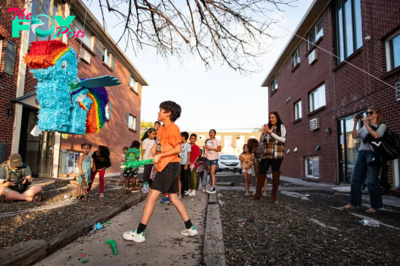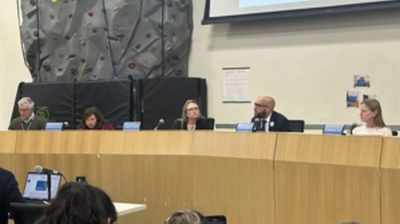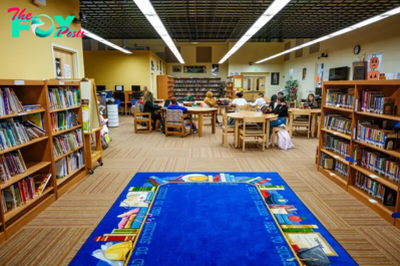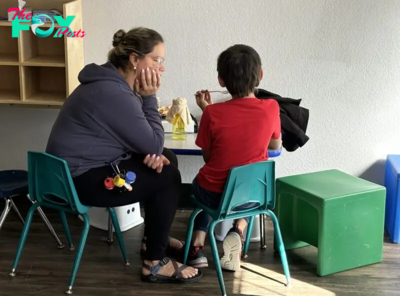Education
Colorado’s $40.6B budget is nearing final passage. Here’s what’s in it.

After weeks of debate and over two dozen amendments, Colorado budget writers Wednesday put the finishing touches on a $40.6 billion budget that increases spending on state workers, health care services, K-12 and higher education.
But the spending plan leaves a number of unanswered questions for the final month of the legislative session — including how the Democratic majority will pay for property tax cuts, a major priority for Gov. Jared Polis and top lawmakers.
The budget for the 2024-25 fiscal year, which starts July 1, still has a few procedural hurdles to go, but no further changes are expected. The Joint Budget Committee on Wednesday rebalanced the budget after the House and Senate passed different versions over the last two weeks.
Next up, the two chambers will be asked to agree on the compromise bill, before it can be sent to the governor’s desk to be signed into law.
The proposal would achieve a longstanding goal of both parties — the elimination of a school funding shortfall that dates back to the Great Recession. Known as the budget stabilization factor, the funding deficit has cost schools more than $9.9 billion since 2010.
“Of all the budgets that I have proudly helped to craft over the years, this one will stand out in my memory years from now,” Sen. Rachel Zenzinger, an Arvada Democrat and the JBC’s vice chair, said in a statement. “The hard work has been worthwhile: we eliminated the budget stabilization factor that we inflicted upon our schools a decade ago, and now K-12 is fully funded. What a joy to make that statement.”
Eliminating the funding shortfall effectively resets K-12 spending to what it was in 1989, when adjusted for inflation and enrollment — a level that many education advocates say is insufficient. Nonetheless, it’s a major milestone for school funding in a state that has long ranked near the bottom of the country in teacher pay.
Institutions of higher Education would receive a $132 million bump, enough for public colleges and universities to limit tuition increases to 3% for Colorado residents and 4% for out-of-state students.
Polis, a Democrat, praised the budget plan through a spokesperson.
“The Governor is thrilled that Colorado is finally fully funding our schools, creating pathways for new housing that Coloradans can afford near job centers and transit, and continuing to increase support for crime prevention and auto theft reduction to help make Colorado one of the 10 safest states,” spokesperson Shelby Wieman said in a statement.
☀️ READ MORE
Immigrant rights groups allege abuse, harassment of transgender detainees at Aurora ICE facility
Denver restores public services, creates asylum-seeker job program as part of expected $90 million in migrant aid
Colorado lawmakers approve bill to require landlords to complete serious repairs faster
The JBC on Wednesday struck most of the amendments lawmakers added to the bill across two weeks of floor debate. The final budget includes $2 million each in additions for crime victim services, school security grants and a ninth grade success program. The JBC agreed to a $500,000 increase for the Tony Grampsas Youth Services program, which provides grants for community groups that work with at-risk children.
Budget writers also restored $8.8 million in affordable housing vouchers that they had previously cut from the budget.
The additional spending was paid for in part by cutting $26 million from a placeholder for future housing legislation.
Here are four other things to know about the budget.
General fund spending is up 7%, even as economic growth slows
General fund spending, which accounts for most of the state’s operating budget, is set to increase by $1 billion next year under the proposal. But tax collections have flattened after booming growth in the wake of the pandemic.
As economic growth slows, general fund revenue is expected to grow just 1.2% next year — just over $200 million. Nonetheless, the state will have much more money to spend.
The main reason: high inflation and steady population growth means the state’s revenue cap under the Taxpayer’s Bill of Rights will grow 5.8% in the 2024-25 budget, after 8.5% growth last year.
The growth in spending drew a rebuke from many Republicans, who have voted in near-lockstep against the budget, with a handful of exceptions.
“I hope you’re asking yourself, ‘did my constituents see a 5% increase in their take-home pay?’” Rep. Lisa Frizell, R-Castle Rock, said during debate on the House floor this month. “We have told the citizens of Colorado to tighten their belts while we here in this building go on a spending spree year after year after year.”
-

 Education31m ago
Education31m agoWhat would it mean if President-elect Trump dismantled the US Department of Education?
-

 Education3d ago
Education3d agoPhiladelphia students have a new reading and writing curriculum − a literacy expert explains what’s changing
-

 Education3d ago
Education3d agoWhy school police officers may not be the most effective way to prevent violence
-

 Education5d ago
Education5d agoCampus diversity is becoming difficult to measure as students keep their race and ethnicity hidden on college applications
-

 Education6d ago
Education6d agoFederal judge rules that Louisiana shalt not require public schools to post the Ten Commandments
-

 Education6d ago
Education6d agoCampuses are ground zero in debates about antisemitism − but that’s been true for 100 years
-

 Education1w ago
Education1w agoSocioeconomic status explains most of the racial and ethnic achievement gaps in elementary school
-

 Education1w ago
Education1w agoMothers, metaphors and dyslexia: What language reveals about the challenges of a child’s learning disability



























